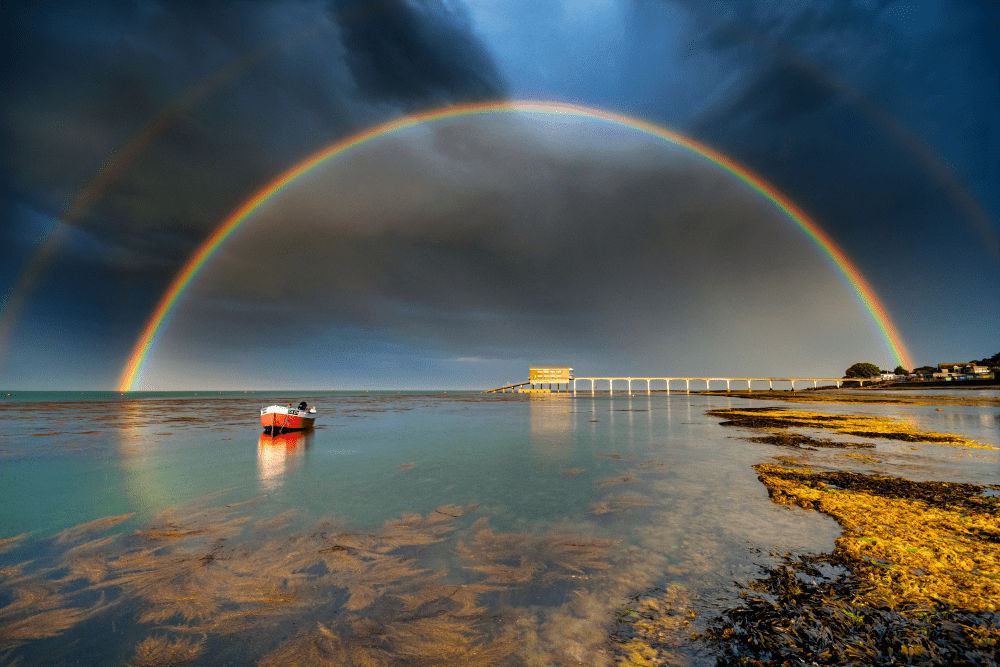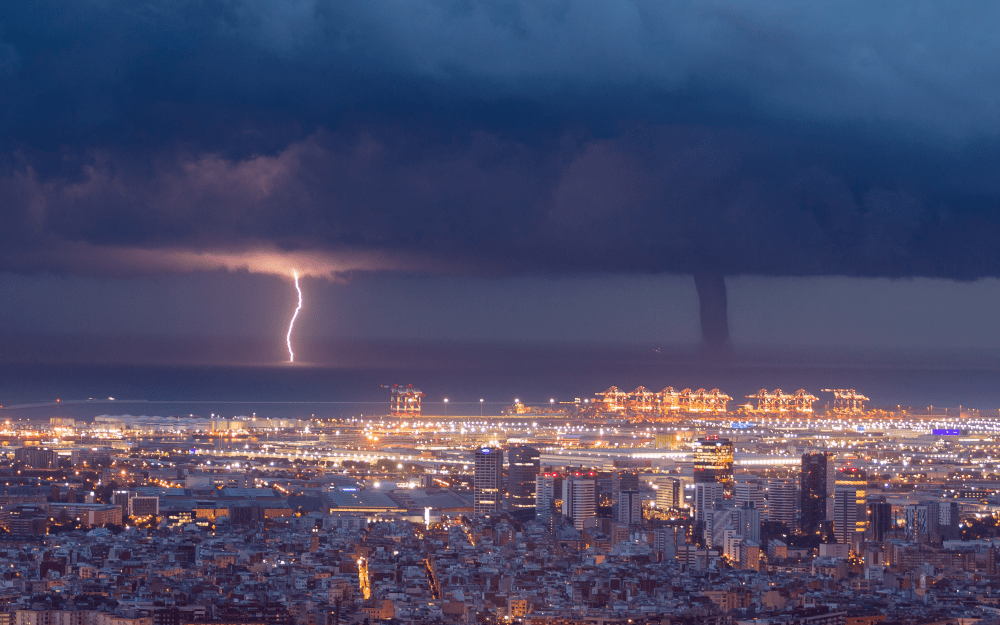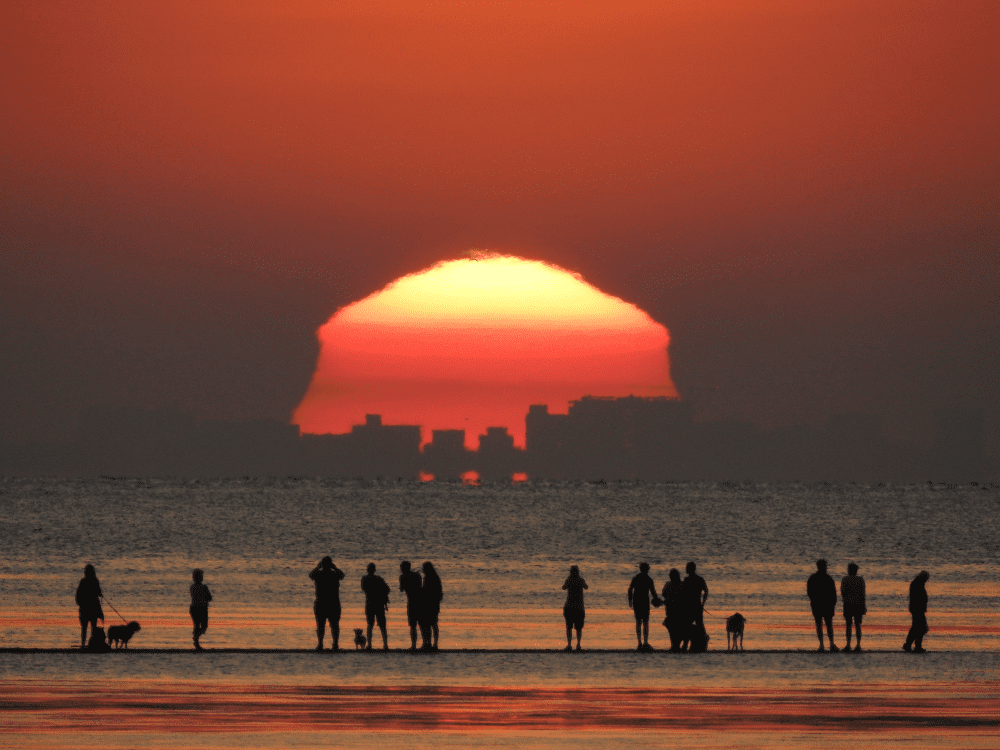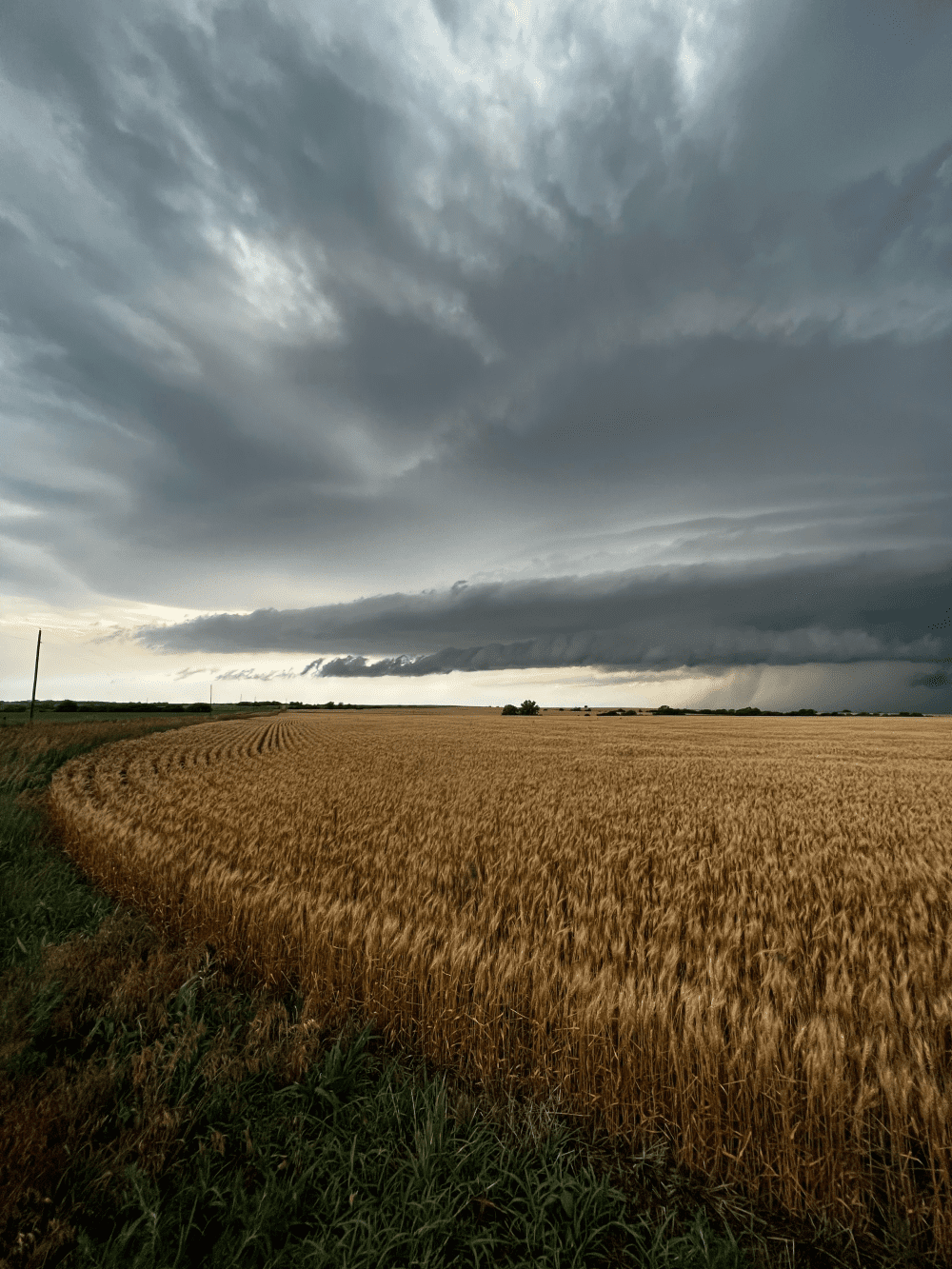A shortlist of spectacular photos submitted to the Royal Meteorological Society’s Weather Photographer of the Year 2022 has been released for public vote. Containing fascinating weather phenomena like Etruscan sunsets, double rainbows, and superior mirages, the selection, chosen by both photography and meteorological experts, will be tough to judge.
So, let’s take a look at what on Earth is happening in a few of them, shall we, starting with this spooky shot above?
Ghost Under The Cliff by Emili Vilamala Benito
The above photo shows a Brocken Specter stretching across the valley of Sau in Barcelona, which is covered in fog. Its maker was standing on the cliff of Tavertet when the Sun dipped to just the spot to create this spectacular optical phenomenon.
Brocken Specters, or Spectre of the Brocken, is the name given to a pretty nifty optical illusion that was first observed on the Brocken peak in Germany, earning it the local name Brockengespenst. It happens when a person or object creates a shadow that then gets a leg up by casting onto a cloud or fog, like in Benito’s photo. The combination results in an enormous shadow that looks really far away, and occasionally moves even if the person or object casting it remains still.
The valley of Sau is a good spot for giving it a go, says Benito, as fog is a common feature of the early morning landscape creating the ideal canvas on which to cast some spooky shadows.

Behold, the double rainbow. Image credit: Jamie Russel, Royal Meteorological Society’s Weather Photographer Of The Year 2022
Departing Storm Over Bembridge Lifeboat Station by Jamie Russel
That’s right, it’s a double rainbow (all the way across the sky). Russel went above and beyond in pursuit of this composition, admitting to wading waist-deep into water while fully clothed so that he wouldn’t miss the shot.
Rainbows are an optical phenomenon that makes an appearance when rain and sunshine meet. The water refracts the light of the Sun splitting it into its constituent colors, which is why we’re sometimes treated to these technicolor bands of light during storms.
Double rainbows occur when sunlight gets reflected twice within a water drop creating a duplicate bow that has the reverse color sequence of its (often more vibrant twin). How rainbows appear to us depends on our position between the light source and the water, which means the view of each rainbow (double or otherwise) is unique to the observer.

Choose your fighter. Image credit: Carlos Castillejo Balsera, Royal Meteorological Society’s Weather Photographer Of The Year 2022
Waterspout In Barcelona by Carlos Castillejo Balsera
We’re back in Barcelona for this dramatic capture of two weather phenomena looking like they’re about to have a Kong vs Godzilla fight at sea. On the right, an intimidating waterspout was sliding down the front of the harbor, said Balsera, its progress occasionally illuminated by explosions of lightning to the left.
Tornadic waterspouts like this one form from cumulonimbus clouds or thunderstorms. They are what happens when rotating columns of air extend downwards from a cloud and pick up water. They can be quite violent, as this one certainly appears.
While a rather aggressive weather format, Balsera says that capturing dramatic storms is, for him, a kind of release. “Apart from my daughters and my family, storms are my passion and the reason why I can stay sleepless for hours and I am able to travel hundreds of kilometers by car in order to feel the discharge of energy that being in front of a storm produces in me,” he said in a statement sent to IFLScience.

Believe it or not, this is in Kent, UK. Image credit: Brendan Conway, Royal Meteorological Society’s Weather Photographer Of The Year 2022
Etruscan Vase Over The Estuary by Brendan Conway
At a glance, you might not pin this image down to being in the UK, but in it we see people standing along a shingle sheet in Kent that is only exposed at low tide to enjoy an Etruscan vase sunset over the Thames Estuary. So named for the way it makes the Sun look like the Greek letter omega, an Etruscan vase sunset occurs when refraction causes an inverted image of the Sun to appear beneath the actual Sun.
As the Sun sets, it links up with its inferior image to create this perplexing omega shape. Conway’s image gets even stranger thanks to a superior mirage that has caused the buildings of Southend to appear higher than where they actually sit, resulting in a strange flaming city in the sky.
The latter atmospheric magic trick occurs at a temperature inversion where a layer of cold air meets a layer of warmer air above it. Colder air is denser and bends light in a way that elevates features of the horizon, sometimes making objects that are actually below the horizon visible to an observer.

Supercells equal bad news. Image credit: Laura Hedien, Royal Meteorological Society’s Weather Photographer Of The Year 2022
Circle The Wheat by Laura Hedien
This looming cloud is something of a force to be reckoned with. Supercells are arguably the most dangerous form of storm clouds, capable of unleashing skull-crushing hail, flash floods, winds and tornados strong enough to whip houses away.
These convective storm clouds are characterized by the presence of a rotating updraft called a mesocyclone deep within it and can bring devastation for several hours. Supercells like this one are common along Tornado Alley, which includes Kansas where this photo was taken.
“There is nothing like the feeling of standing before something so massive and potentially destructive but yet so incredibly majestic and beautiful,” said Hedien in a statement sent to IFLScience. “To even have a slight understanding of a supercell’s birth, maturity and finally death is humbling.”
If you’ve enjoyed these photos and would like to see more, don’t forget to vote for the Royal Meteorological Society’s Weather Photographer of the Year 2022.
Source Link: Brocken Specters And Tornadic Waterspouts Among Weather Photographer Of The Year 2022 Shortlist